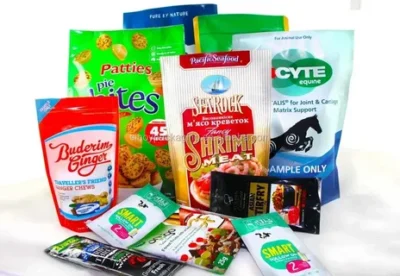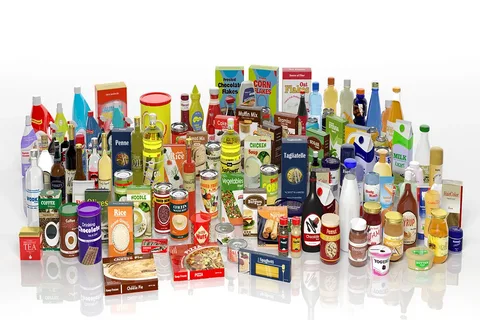Packaging is more than just a container — it’s an essential part of how consumers interact with products. Among the many packaging formats available,
Packaging is more than just a container — it’s an essential part of how consumers interact with products. Among the many packaging formats available, tubed packaged goods stand out for their convenience, efficiency, and versatility. Whether it’s your everyday toothpaste, a soothing skincare cream, or even an industrial adhesive, products in tubes make daily life simpler and more hygienic.
This article dives deep into the world of tubed packaged goods, highlighting their types, materials, applications, innovations, and challenges, along with an FAQ section to clarify common queries.
Understanding Tubed Packaged Goods
Tubed packaged goods Tubed packaging refers to a type of flexible or semi-rigid container shaped like a tube that holds products which can be squeezed out for use. These tubes are typically sealed at one end and have a dispensing opening at the other, often capped to maintain product integrity.
The design caters to products that are pasty, creamy, or viscous — anything that can be smoothly dispensed in small controlled amounts.
Why Choose Tubed Packaging?
1. User-Friendly Dispensing
Tubed packaging is favored for how easily it allows controlled dispensing. A simple squeeze can release the perfect quantity, minimizing product waste and making application clean and convenient.
2. Enhanced Product Protection
The sealed design protects the contents from contamination, oxidation, and moisture, preserving product efficacy and freshness.
3. Compact and Portable
Tubes are lightweight and easy to carry, making them travel-friendly. Many brands offer travel sizes that comply with airline regulations.
4. Customizable Branding
Tubed packaging offers great opportunities for branding with customizable printing, shapes, and finishes, helping products stand out on shelves.
5. Cost Efficiency
Manufacturing tubes often costs less than rigid containers. They also reduce shipping weight and volume, offering cost savings along the supply chain.

Materials Commonly Used in Tubed Packaging
Plastic Tubes
Most commonly made from polyethylene (PE) or polypropylene (PP), plastic tubes are flexible, durable, and relatively inexpensive. They are well-suited for cosmetics, food products, and some pharmaceuticals.
Aluminum Tubes
Aluminum tubes offer excellent barrier protection, ideal for products sensitive to light and air, such as pharmaceutical ointments and some cosmetics. Though less flexible, they provide a premium feel and are recyclable.
Laminated Tubes
Laminated tubes combine layers of plastic and metal foil to balance flexibility with product protection. They are popular in cosmetics and pharmaceutical sectors, offering printability and product safety.
Applications of Tubed Packaged Goods
1. Cosmetics & Personal Care
From moisturizers and sunscreens to facial cleansers and hair gels, tubes provide hygienic, mess-free packaging that appeals to consumers seeking convenience.
2. Food Products
Condiments like ketchup, mayonnaise, mustard, and bakery items such as icing or frosting frequently come in tubes, making dispensing easier and cleaner.
3. Pharmaceuticals
Ointments, creams, gels, and topical medications are often packaged in tubes to maintain sterility and ensure precise dosing.
4. Industrial Products
Adhesives, sealants, and other chemical compounds benefit from tubes for easy application and minimizing waste.
Recent Innovations and Trends in Tubed Packaging
Sustainability Focus
Manufacturers are investing in recyclable and biodegradable tube materials to meet rising consumer demand for environmentally friendly packaging. Innovations like mono-material tubes improve recyclability.
Smart Features
Innovations such as tamper-evident seals, airless tubes (which prevent product oxidation), and easy-open caps enhance safety and user experience.
Design & Customization
Brands experiment with shape, color, texture, and finishes to create unique shelf appeal. Matte, glossy, and soft-touch finishes are popular.
Refillable Tubes
To reduce single-use waste, refillable and reusable tube systems are gaining traction, particularly in cosmetics.
Challenges Facing Tubed Packaging
- Recycling Difficulties: Multi-layer laminates pose challenges for recycling due to their composite nature.
- Material Compatibility: Some products may react with tube materials, requiring specialized formulations or coatings.
- Manufacturing Complexity: High-quality printing and barrier properties require advanced manufacturing technology, which can increase costs.
FAQs About Tubed Packaged Goods
Q1: What kinds of products work best in tubes?
A: Tubes are ideal for viscous or semi-solid products like creams, gels, ointments, adhesives, and pastes that need hygienic, controlled dispensing.
Q2: Are tubes environmentally friendly?
A: Tubes made from single-type plastics or aluminum are recyclable, but laminated tubes are harder to recycle. New sustainable materials and mono-material tubes are improving eco-friendliness.
Q3: How do tubes maintain product freshness?
A: Tubes protect products from exposure to air, moisture, and contaminants, which helps preserve their effectiveness and shelf life.
Q4: Can tubes be resealed after opening?
A: Yes. Most tubes come with caps or flip-tops that can be tightly closed to maintain product integrity after use.
Q5: Are aluminum tubes better than plastic?
A: Aluminum tubes provide superior barrier protection but are less flexible and usually more expensive. Plastic tubes are lighter and more flexible but offer less protection against oxygen and light.
Q6: Can I recycle a tube with product residue inside?
A: Ideally, tubes should be emptied and rinsed before recycling, though this depends on local recycling guidelines.
Q7: What innovations are coming next in tube packaging?
A: Expect more recyclable materials, refillable systems, airless tubes, and smart caps with indicators for freshness or usage tracking.
Conclusion
Tubed packaged goods remain one of the most practical and versatile packaging options across many sectors. They offer a perfect blend of convenience, hygiene, product protection, and cost-efficiency, making them a staple in daily consumer products. As sustainability becomes a priority and consumer expectations evolve, the tubed packaging industry is rapidly innovating to meet these challenges through improved materials, designs, and smart features.
Whether it’s your toothpaste, favorite sunscreen, or a tube of glue, these unsung packaging heroes continue to deliver value by making products easier to use, store, and carry — a true testament to the power of smart packaging design.
More Info: primereport




COMMENTS